Embracing Efficiency: IoT Technology Transforming HVAC Systems
In the realm of modern technologies, the Internet of Things (IoT) has emerged as a game-changer in various industries, and one of the sectors it is significantly revolutionizing is heating, ventilation, and air conditioning (HVAC). IoT technology is now being integrated into HVAC systems to enhance efficiency, improve performance, and provide better comfort and control for users.
-
What is an HVAC System?
HVAC stands for Heating, Ventilation, and Air Conditioning. It refers to the technology and systems used for indoor environmental comfort.
Here’s a brief breakdown of what each component of HVAC does:
Heating:
Heating systems are responsible for keeping indoor spaces warm. Common heating sources include furnaces, heat pumps, electric heaters, and boilers.
Ventilation:
Ventilation systems provide fresh air and control indoor air quality by removing pollutants, odors, and excess moisture. Proper ventilation is crucial for maintaining a healthy indoor environment.
Air Conditioning:
Air conditioning systems cool indoor spaces by removing heat and humidity. They help maintain comfortable temperatures during hot weather.
By integrating heating, ventilation, and air conditioning systems, HVAC technology aims to provide thermal comfort and high indoor air quality. HVAC systems can be found in residential homes, commercial buildings, industrial facilities, and vehicles. They play a crucial role in ensuring a comfortable and healthy indoor environment.
-
How Does HVAC Work?
HVAC systems work by controlling the temperature, humidity, and air quality of indoor spaces through a combination of heating, ventilation, and air conditioning processes.
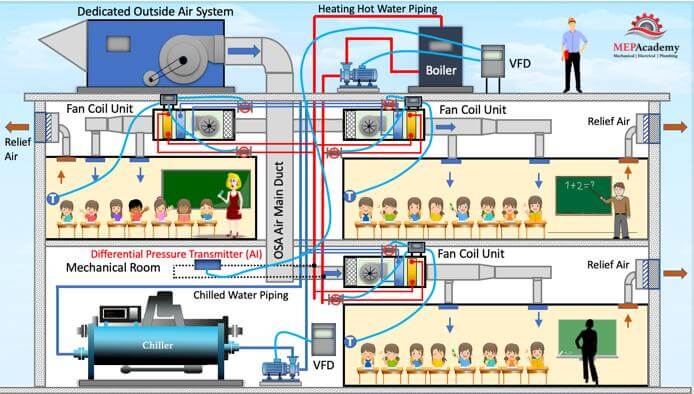
Image source: https://mepacademy.com/basic-hvac-controls/
Here’s a brief overview of how HVAC systems typically work:
- Heating Process:
During the heating season, the HVAC system will use a furnace, heat pump, or boiler to generate heat. The heat is then distributed throughout the building using ductwork, radiators, or radiant flooring.
- Cooling Process:
When cooling is required, the air conditioning unit or heat pump in the HVAC system extracts heat from indoor air and releases it outside. This process cools the air before distributing it back into the building through ductwork or vents.
- Ventilation Process:
The ventilation component of HVAC systems ensures a constant supply of fresh outdoor air while removing stale indoor air. Ventilation systems may include fans, ductwork, and air filters to control air flow and quality.
- Thermostat Control:
A thermostat serves as the control center for the HVAC system, allowing users to set their desired temperature. The thermostat communicates with the heating and cooling components to maintain the set temperature within the building.
- Air Filtration:
HVAC systems often include air filters to remove dust, pollen, pet dander, and other pollutants from the air. Clean filters help improve indoor air quality and protect the system from dirt buildup.
- Ductwork:
Ductwork plays a crucial role in distributing heated or cooled air throughout the building. Properly designed and sealed duct systems ensure efficient airflow and temperature control.
Overall, HVAC systems work by regulating temperature, humidity, and air quality to create a comfortable and healthy indoor environment. Regular maintenance, including filter replacement and system inspections, helps ensure optimal performance and energy efficiency.
-
How IoT Transforming HVAC Systems?
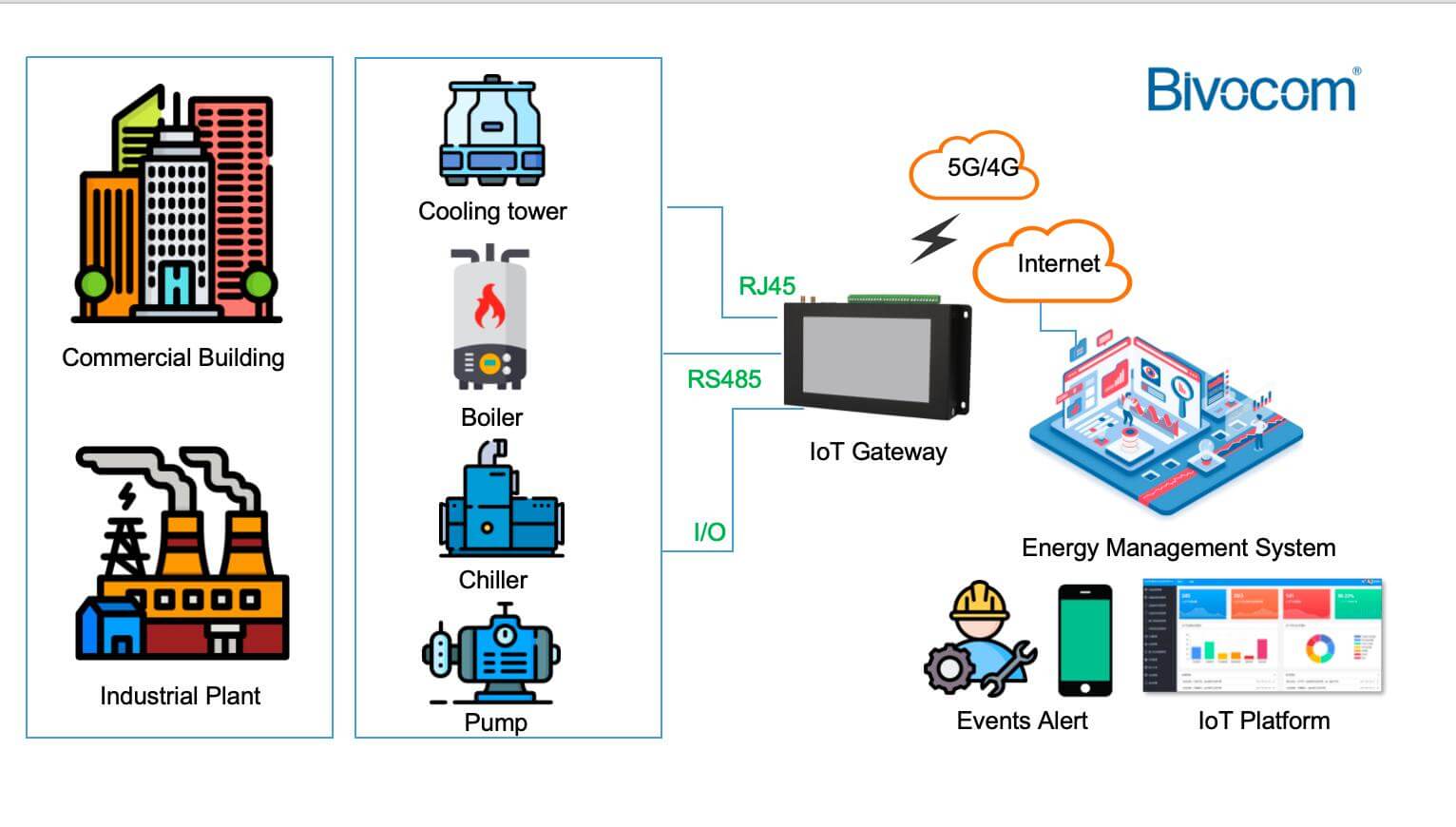
Icon source: https://www.flaticon.com/
- Smart Sensors for Data-Driven Insights
One of the key aspects of IoT in HVAC is the use of smart sensors. These sensors can be installed within HVAC systems to collect and monitor a wide range of data points, such as temperature, humidity levels, air quality, and equipment performance metrics. By gathering real-time data through IoT gateway, these sensors enable HVAC systems to adapt and optimize their operations dynamically based on current conditions.
- Remote Monitoring and Control
IoT-enabled HVAC systems offer remote monitoring and control capabilities, allowing facility managers or homeowners to access and adjust their systems from anywhere with an internet connection. This remote accessibility provides convenience and flexibility, as issues can be identified and addressed promptly without the need for on-site visits, leading to reduced downtime and improved system reliability.
- Predictive Maintenance for Greater Reliability
Another significant benefit of IoT technology in HVAC is predictive maintenance. By analyzing the data collected from sensors, machine learning algorithms can predict potential equipment failures before they occur. This proactive approach allows for scheduled maintenance activities to be planned in advance, preventing costly breakdowns and ensuring the system operates at peak performance levels.
- Energy Efficiency and Cost Savings
IoT-enabled HVAC systems are also designed to optimize energy usage and improve overall efficiency. By continuously monitoring environmental conditions and occupancy patterns, these systems can adjust settings automatically to minimize energy consumption while maintaining comfort levels. This results in lower utility bills, reduced carbon footprint, and a more sustainable approach to heating and cooling.
- Enhanced Comfort and User Experience
Integrating IoT technology in HVAC systems enhances the overall comfort and user experience. Users can personalize their settings, create schedules, and receive notifications or alerts regarding system status or potential issues. For commercial buildings, occupants can have individual temperature control in their workspace, increasing satisfaction and productivity.
Conclusion
In conclusion, IoT technology is reshaping the HVAC industry by providing intelligent solutions that optimize performance, improve efficiency, and elevate user experience. With the capabilities to collect and analyze data in real time, enable remote monitoring and control, predict maintenance needs, and enhance energy efficiency, IoT-enabled HVAC systems are setting a new standard for comfort and sustainability. As this technology continues to evolve, we can expect even greater innovations and advancements in the field of heating, ventilation, and air conditioning.
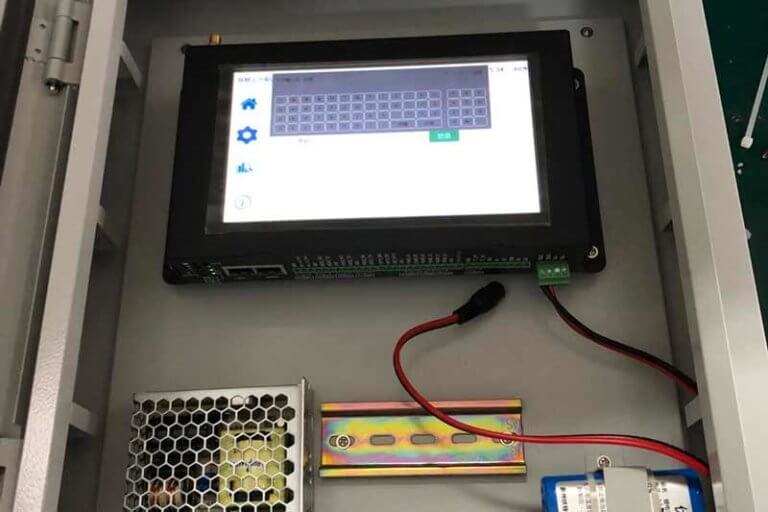
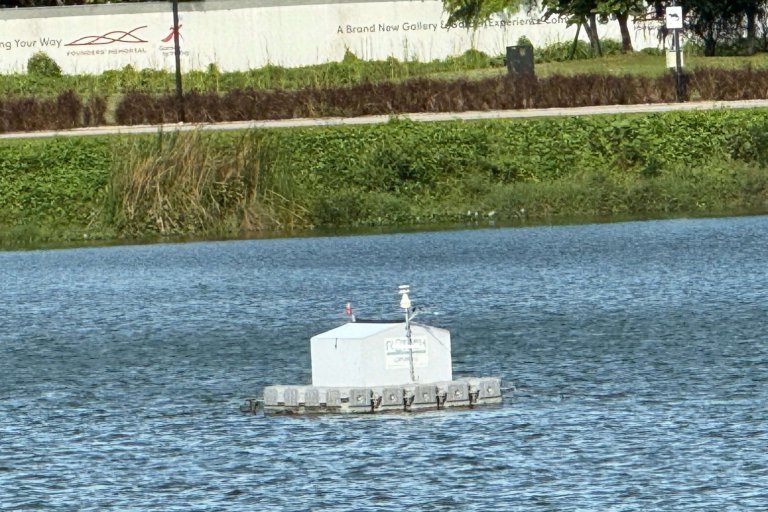
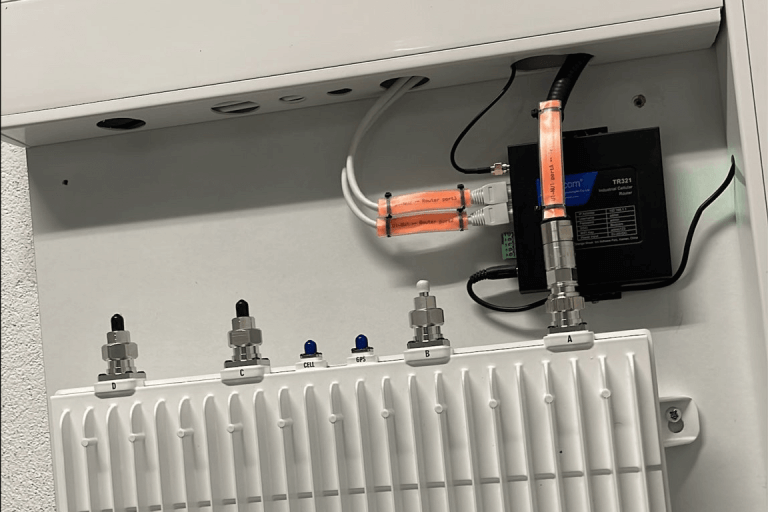

Comment